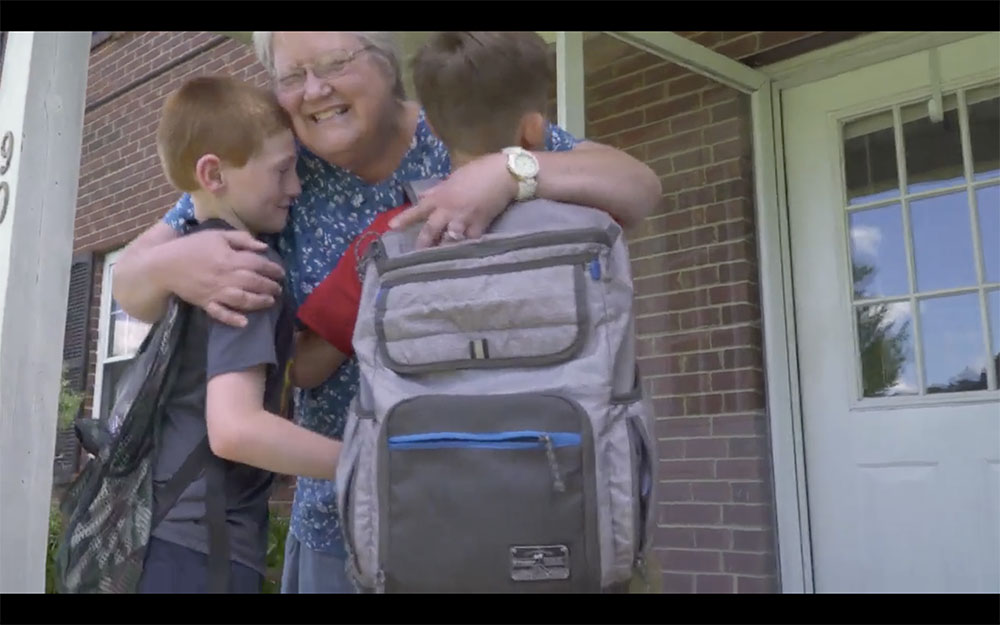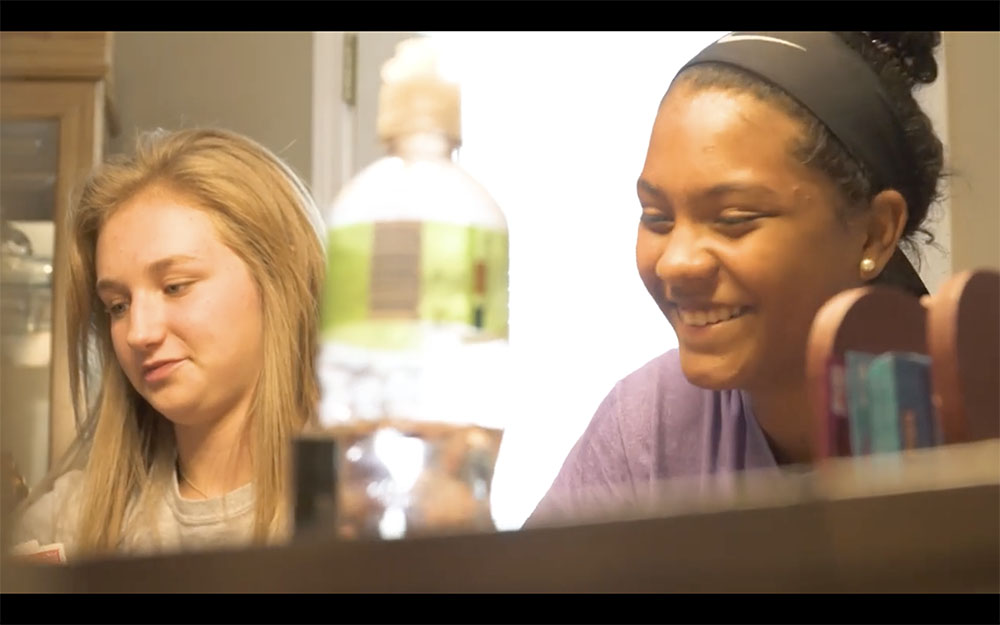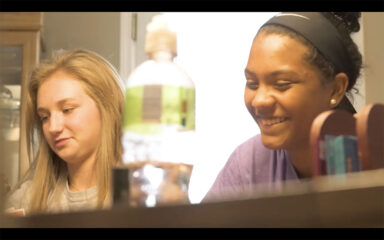A couple of months ago, I shared an article I’d written that I’d enjoyed working on so much I felt compelled to talk about it. And lucky for me, that’s not the only work I’ve done that I feel that strongly about. So here’s another piece dragged out of mothballs for a little bit of nostalgia and a little bit of a brag.
The work: A video for a children’s home

It was a video introducing a children’s foster home and encouraging the audience to donate. Alabama Free Will Baptist Children’s Home offers a loving home and family to kids who’ve been through some of the absolute worst in life. The home is a Christian one, but they don’t require that of the kids — the focus is on helping the kids feel safe and loved, and helping them heal from the trauma they’ve experienced. And the home also offers support and guidance for other foster families facing challenges with their own foster children. It’s a great organization full of people — adults and children — who care so much. Working with them, through my agency client, was a deeply moving experience.
Why I loved it:
It’s a five-minute video raising money for a good cause. Like they frequently are. And?
It’s such a very important cause.
I mean, it’s kids. And not just any kids — kids who’ve had a really hard life and need a soft place to land. Innocent kids who should be protected like any other kids and in many cases haven’t been. I have no interest in being a parent myself, and if I’m gonna be honest, I’m not that great with little kids. (Kids are really confusing, y’all. It’s hard enough getting a theoretically intelligent adult to articulate what they want.) This was a way I could use something I love doing — and, if I say so myself, do better than a lot of people — to benefit the organization and the kids it serves. (And yes, I did still charge for it, because it was client work, but I still put a lot of myself into working on the video. This one was a hard one to make at times.)
I was proud of the interviews.
The video featured clips of interviews with people from the organization, house parents, and a few of the kids, and as you might imagine, they were sensitive discussions to have.
First, I have to give credit to these kids for sitting down with us at all. They weren’t the little kids — they were in their mid to late teens — but they were still young people who’d experienced unspeakable trauma (the client didn’t tell me about it, because it’s none of my damn business, but it was really bad), and they were sitting down in front of complete strangers with a camera, having only a basic explanation of what they were going to be asked about and not being completely sure it wasn’t going to be emotionally devastating, and they did it anyway. That is strong stuff, and I admire them so much for it.
On to the brag: In a previous post, I mentioned the delicate nature of interviews like this — you want to get information and footage that will be compelling and get the job done, but you absolutely don’t want to do it at the expense of the interview subject. A shot with heart-wrenching, wallet-opening tears isn’t worth re-traumatizing a child. I wanted the children’s perspective on what it was like coming to the home, what their healing experience was like, but asking them about the most horrible time in their life was absolutely off the table.

So instead, I asked them about other kids. I asked them about what other kids were like when they arrived at the home, and what those kids needed, and how the older children helped them settle in and helped them heal. I put the children I was interviewing in a position of power — thinking not as a traumatized child but as a person who had the power to help others. And as they talked about it, you could tell they weren’t just talking about the other kids — they were talking about their own trauma, their own needs, the support they needed to heal. I was getting all the compelling content I needed, and doing it by making the children feel better and not worse.
I was proud of the script.
My main goal when I sat down to write the script was that this was not going to be a sad-puppy-in-cage, Sarah-McLachlan-score tearjerker of an appeal. It’s cheap, and it would just blend in with all the other tearjerker appeals. My goal was to go straight for the empathy, helping people understand the reality of these kids’ experiences beyond, “Wow, that’s really awful,” and feel a connection with them, and maybe even feel just a tad bit of helplessness in the face of such a sad and ongoing struggle. But I also wanted to show them what could be achieved with their support — the happ(ier) ending to the struggle, the life these kids deserve to and can and do have at the home — and relieve that feeling of helplessness by giving them a thing they can do to help.
The result was a script I was incredibly proud of, and that the client loved, and that the grandclient loved, and that the voice actor loved so much she cried in the booth and the VO had to be re-recorded. And that ultimately, donors loved, too.
Incidentally, it’s fine to be proud about things. It’s good, in fact.
There’s a whole thing in society about pride, and I don’t get it. We’re told to take pride in our work, but then we actually express pride in our work, we’re told we’re bragging. In our industry, we’re told there’s no “I” in “team,” that’s it’s always a we, and I TOTALLY SUBSCRIBE TO THAT. That’s not just an arbitrary industry convention — it’s always “we” and “our” because no matter what the work is, it couldn’t have happened without the entire team together, everyone making their own contributions. When a project is outstanding, it’s because we did it, and it’s our credit to enjoy.
That said: It can give the idea that being personally proud of your personal contributions isn’t okay, and that’s not okay.
I am deeply proud of the work we — my client and I — did on this project. It wouldn’t have been possible without an exceptional producer, an artful videographer, a really handy lighting and sound guy, a skilled editor, and, yeah, a really great copywriter. (I hope Uptick Marketing doesn’t mind me name-dropping them here. Y’all, they do some awesome work.)
But I’m also proud of the work I did to contribute to that, from the initial concept to doing those interviews and writing that script. And that’s okay. If y’all, as a creative team, made a great ad, but you, as an art director, made the visuals pop in an extraordinary way, be proud of that. If y’all, as a team, made a great ad, but you, as a copywriter, suggested the cat-herding cowboy should be lint-rolling his sling by the campfire (no, I will never let that go), be proud of that.
There is, in fact, an “I” in “creative team” (it’s right there in the first word), and as long as you also celebrate the individual contributions of your colleagues and your success as a team, you also deserve to be proud of your own contributions, and your colleagues should be proud of them, too. It’s a lot easier to love your work, even when it’s just a five-minute fund-raising video, when you allow yourself, personally, as a creative, as an I, to take pride in it.

